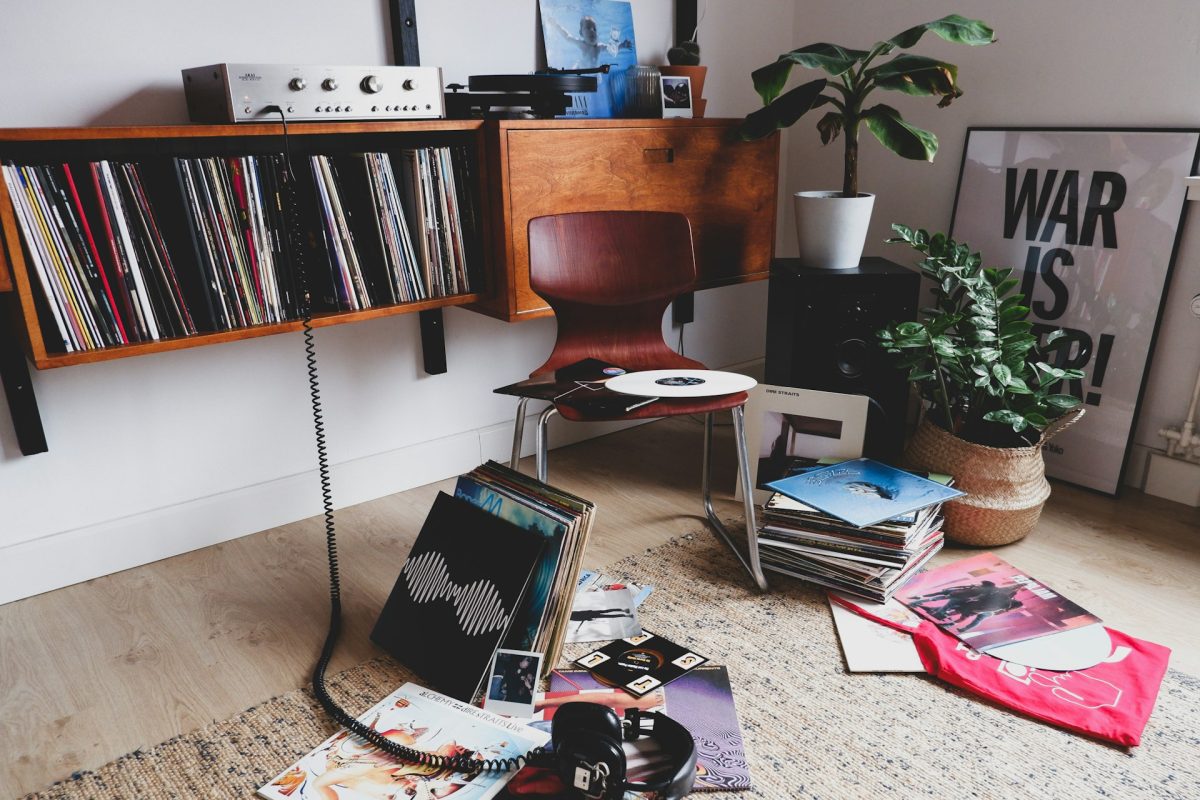What Do You Need for a Vinyl Setup?
Welcome to the wonderful world of vinyl! If you’re new here, you might be wondering what equipment you need to start enjoying those records. In these days of endless, crazily coloured vinyl variations it’s worth reminding ourselves that they aren’t just good for looking at, but listening too. But does it all seem a bit confusing? Don’t worry, we’ve got you covered.
There’s no single “right way” to set up your vinyl system. It’s all about what works best for you, your space, and your listening preferences. Let’s walk through some options to help you figure out what’s best for your needs.
Here are some common ways people set up their vinyl systems, starting with the most customisable and moving toward simpler options:
Option 1: The Full Custom Experience
Turntable → Phono Preamp → Amplifier/Receiver → Passive Speakers
This classic setup gives you the most flexibility to upgrade individual components as your tastes evolve. You can swap out any piece for something better in time. It might take up more space, but many vinyl enthusiasts love this approach. Better results with dedicated (quality) components.
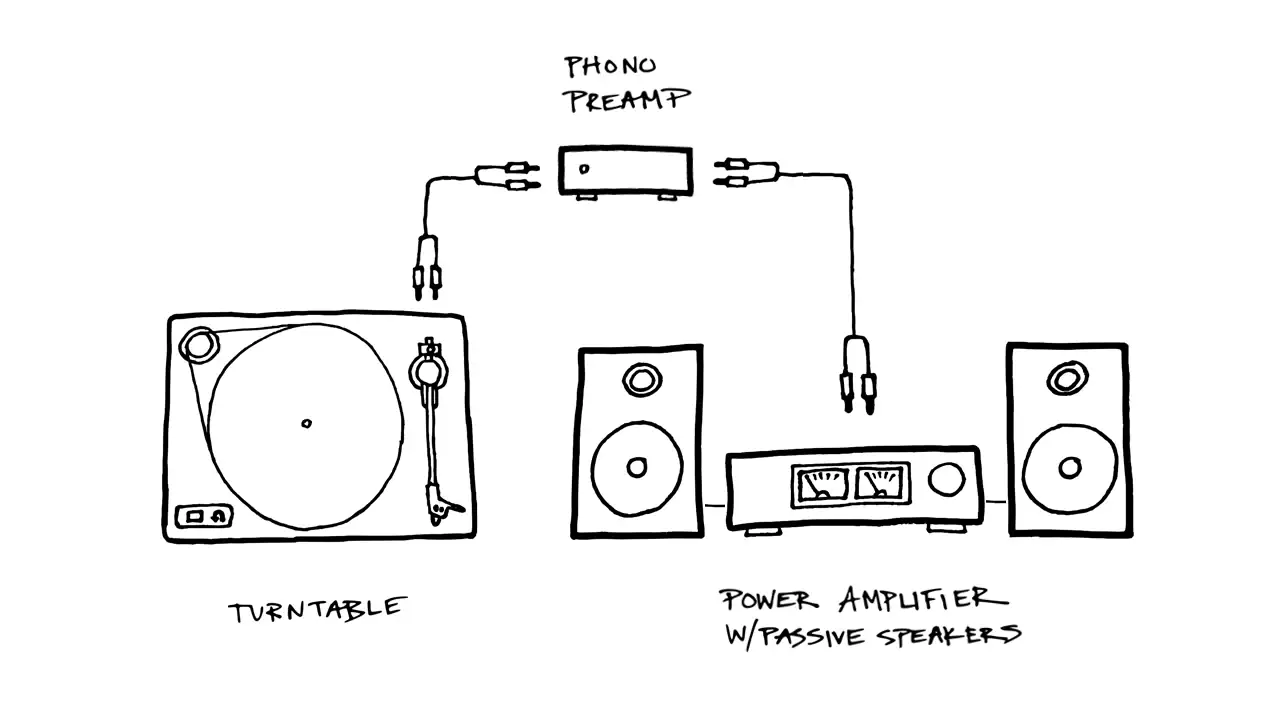
Option 2: Streamlined With Integrated Components
Turntable → Integrated Amplifier with Phono Preamp → Passive Speakers
This simplifies things by combining two components. Your amplifier already has the phono stage / preamp built in, saving you space and reducing cable clutter.
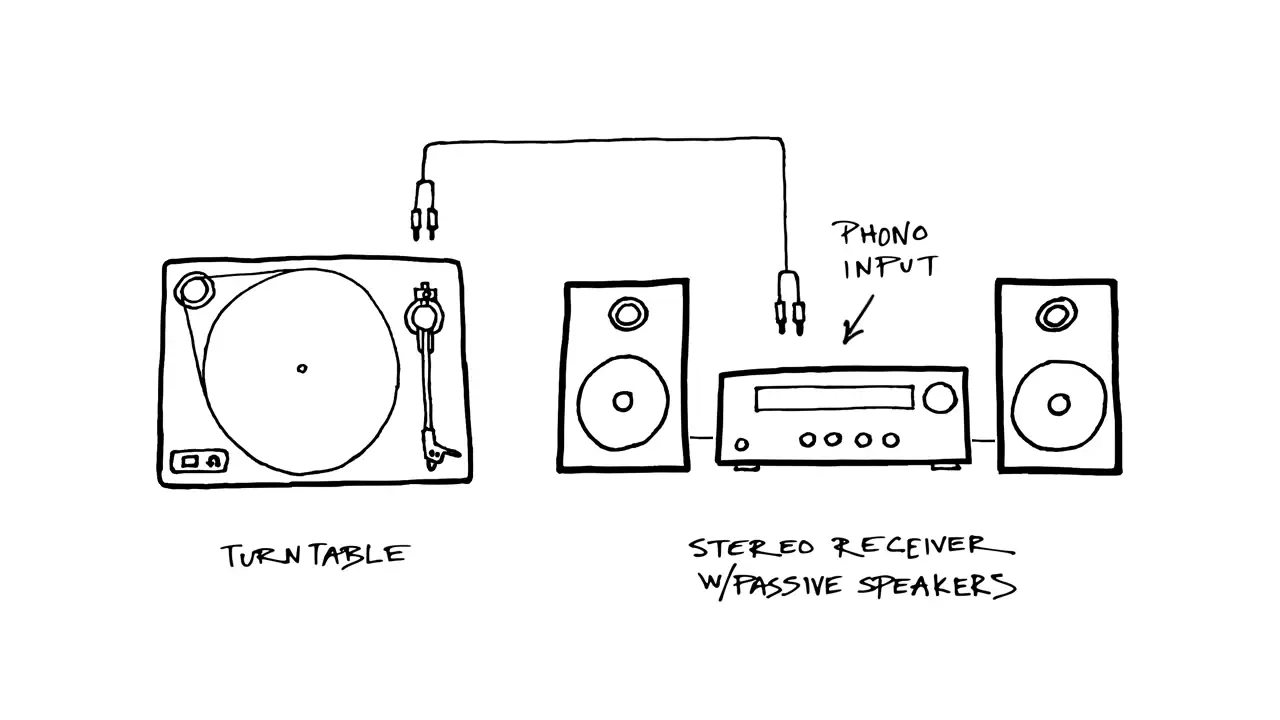
Option 3: Let Your Turntable Do More
Turntable with Built-in Phono Preamp → Amplifier/Receiver → Passive Speakers
Many modern turntables come with a phono stage / preamp already inside. This setup keeps things tidy while still giving you amplifier options.
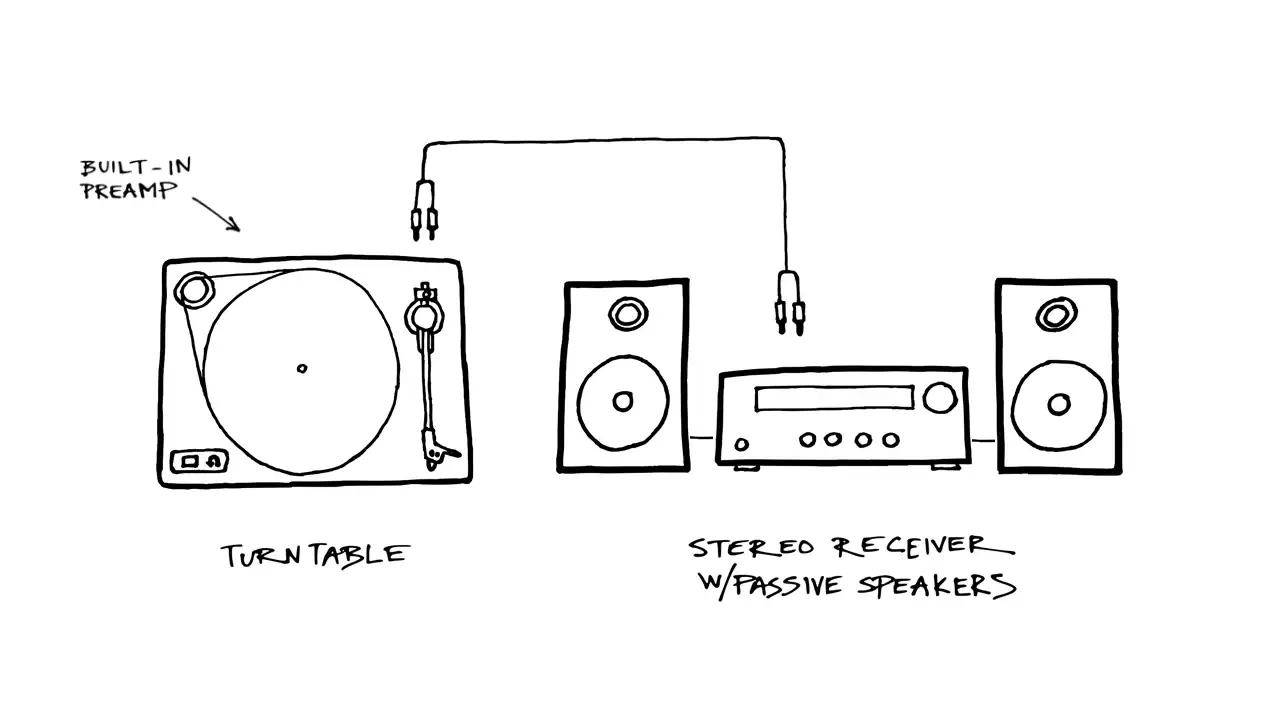
Option 4: Active Speaker Setup
Turntable → Phono Preamp → Active Speakers
Active speakers have built-in amplification, so you don’t need a separate amplifier. This setup is more compact while still offering flexibility.
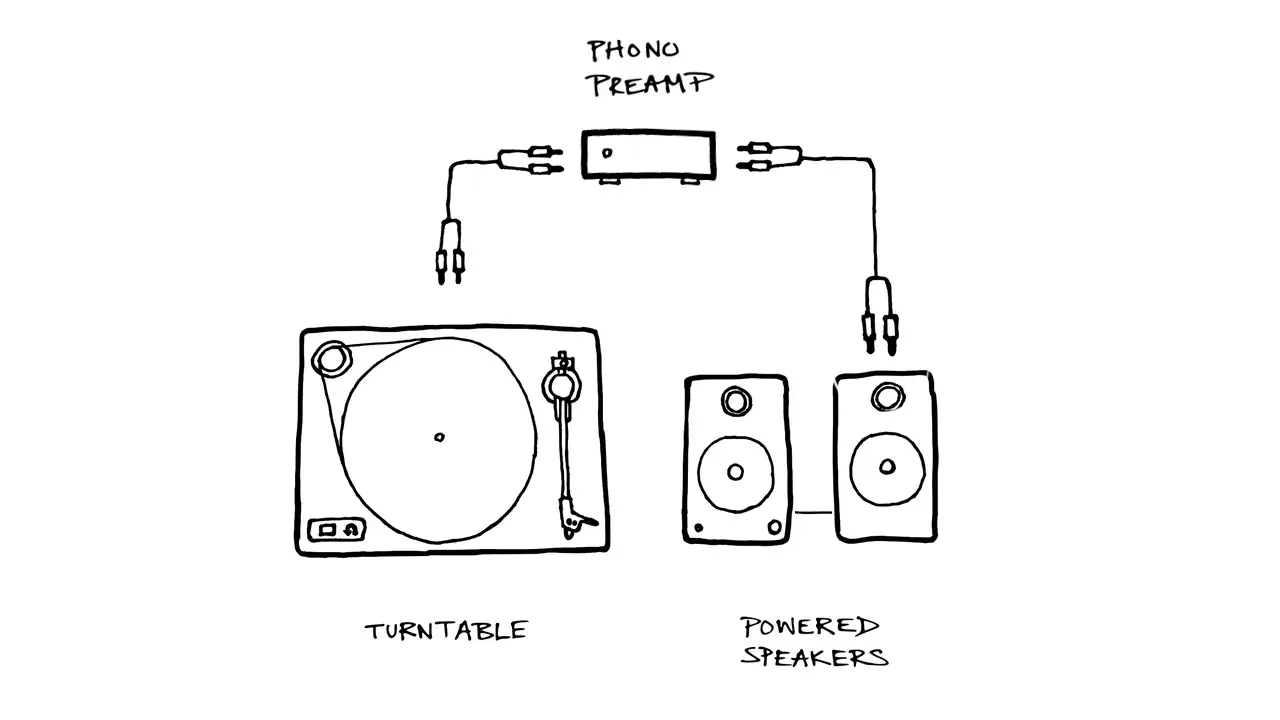
Option 5: Super Simple Setup
Turntable with Phono Preamp → Active Speakers
Looking for both minimal fuss and equipment? This might be perfect for you. With just two components, it’s easy to set up and doesn’t take much space. The trade-off is less upgrade customisation down the road.
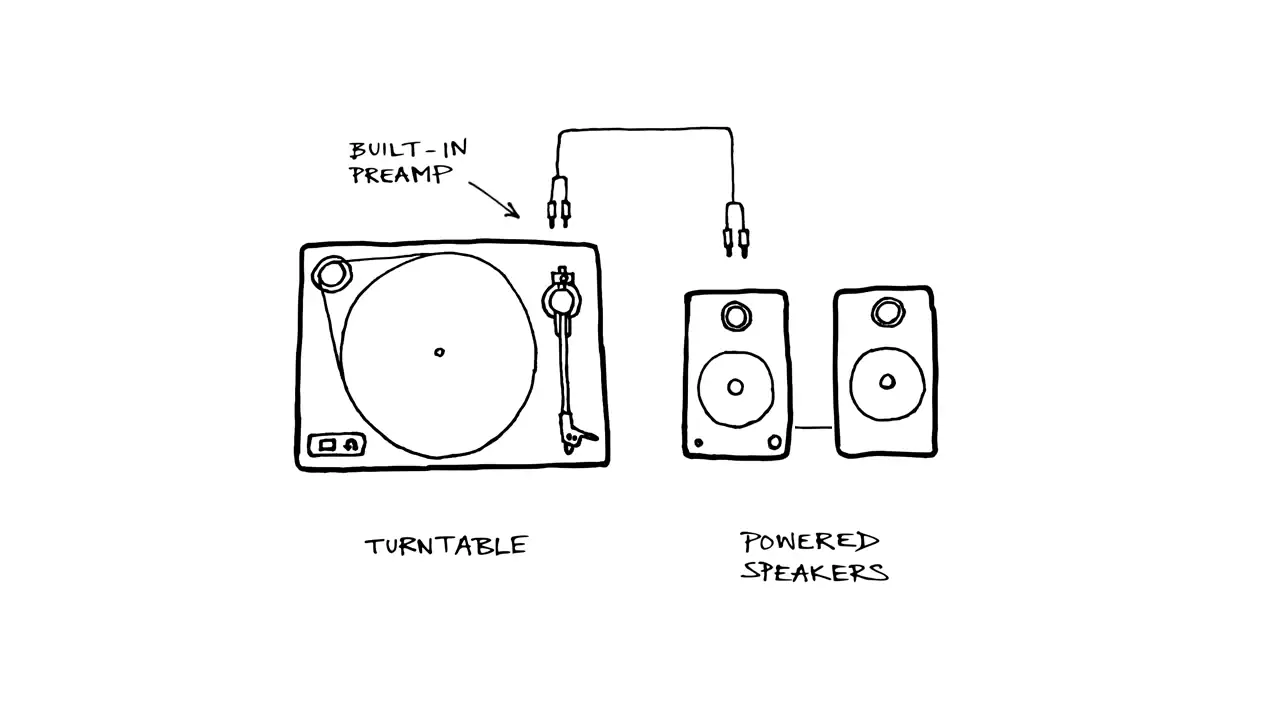
Option 6: Headphone Listening
Turntable with Phono Preamp → Headphone Amplifier → Headphones
If you want to use headphones, just connect a headphone amplifier to your phono stage (or component with a built-in phono stage) and you’re good to go! You may get along better with your neighbours, but don’t forget the simple joys of listening to a vinyl record together with people you care about.
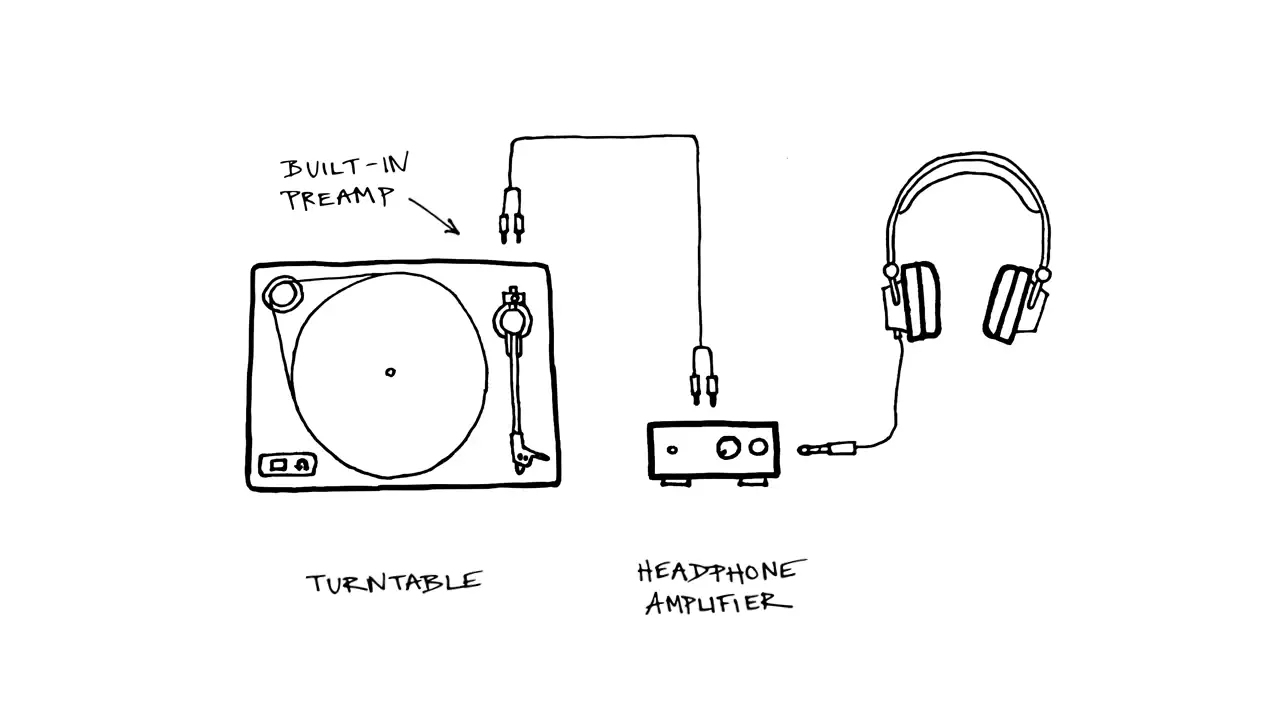
Understanding the Components
Turntable
Let’s break down what each piece of equipment actually does in simple terms:
This is your record player – the star of the show! AKA ‘record deck’, ‘deck’, or ‘that thing dad plays music from’. It spins your vinyl and has a needle (stylus) that reads the grooves to create sound. Some turntables come with extra features built in, like a phono stage (pre amp), which can simplify your overall setup.
If you’re curious about all the parts of a turntable (like cartridges, platters, and tonearms), don’t worry about those details just yet – you can always explore those fascinating bits later when you’re ready to dive deeper.
Speakers: Passive vs. Active
You have two main speaker options, and neither is inherently “better” – they just require different setups:
Passive Speakers:
Need an external amplifier to work
Connect using speaker wire
Generally offer more options and styles
A classic choice for home audio setups
Active/Powered Speakers:
Have built-in amplification
Plug directly into power outlets
Connect to your phono stage with RCA cables
Some newer models even have phono stages built right in!
Great space-savers for smaller rooms
Amplifiers & Receivers
These boost the signal from your turntable to make it loud enough for your speakers:
Power Amplifier: Simply amplifies audio signals to drive your passive speakers.
Integrated Amplifier: Combines a power amplifier with volume controls and input selection. Some (but not all) include a phono stage.
Receiver: An integrated amplifier (that often also includes a radio tuner and other seemingly boring, non-vinyl related features). Again, some have phono stages built in, others don’t.
Phono Stage/Preamp
This little hero converts the turntable’s weak “phono” signal into the stronger “line level” signal that modern amplifiers need. Without it, your records would sound very quiet and thin!
You can find phono stages:
As standalone units
Built into some turntables
Built into some amplifiers/receivers
Built into some active speakers
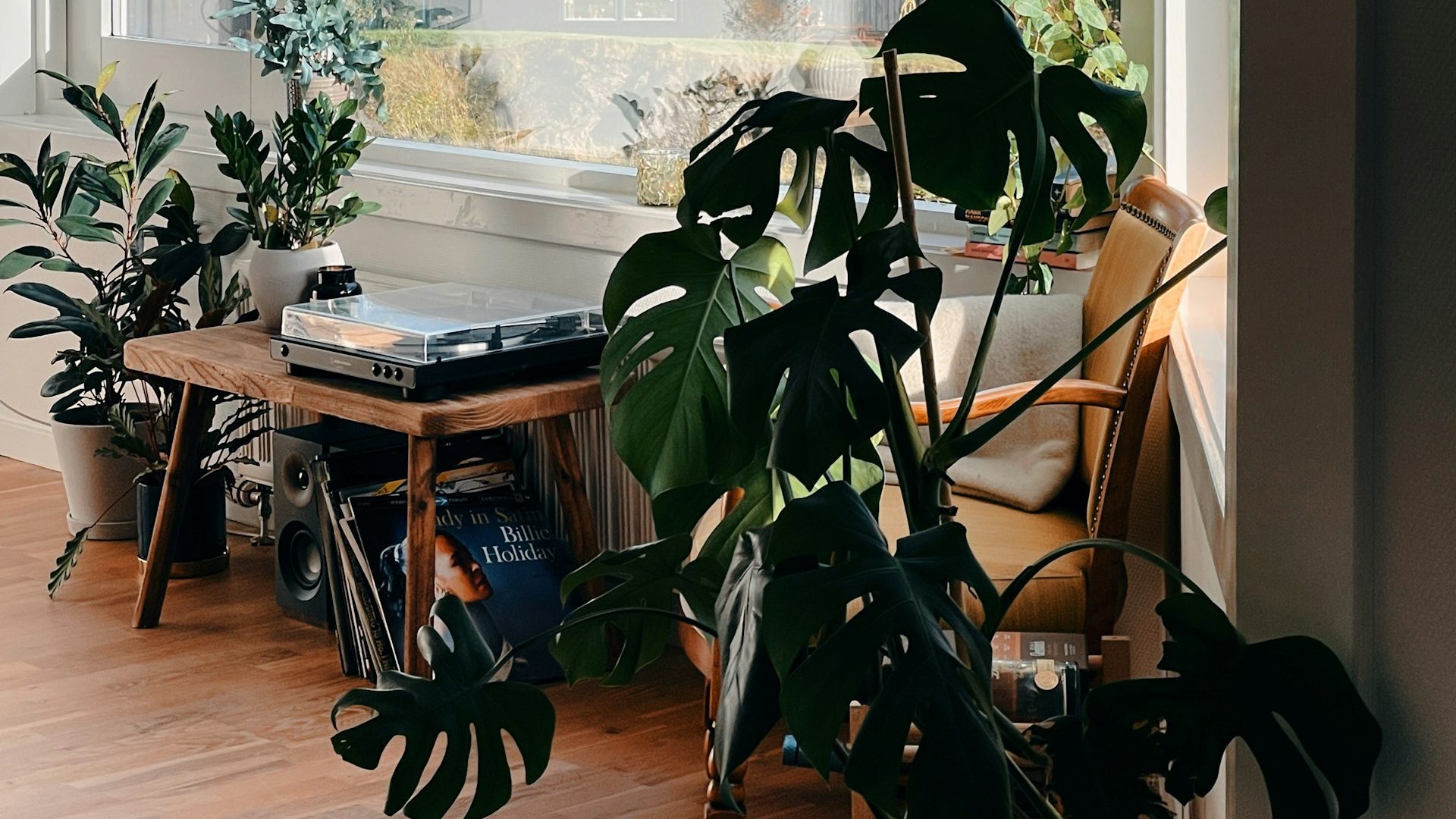
You’re ready to Start Your Vinyl Journey
Remember, there’s no perfect setup – just the one that’s perfect for you. Consider your budget, space, and how you like to listen when choosing your components.
As you get more into vinyl, you can always upgrade individual pieces of your system. That’s part of the fun!
Seek out music from artists and labels that put love and effort into their recordings, vinyl, and how they treat their fans. If they make a mess of mastering the music, make a cheap vinyl pressing, etc no amount of tinkering with the system is going to rescue that. Higher attention to detail is going to make a difference.
Support the music you love and happy listening!
Artists, forever.
Photo and illustration credits: Jurian Kersten and uturnaudio
◾


